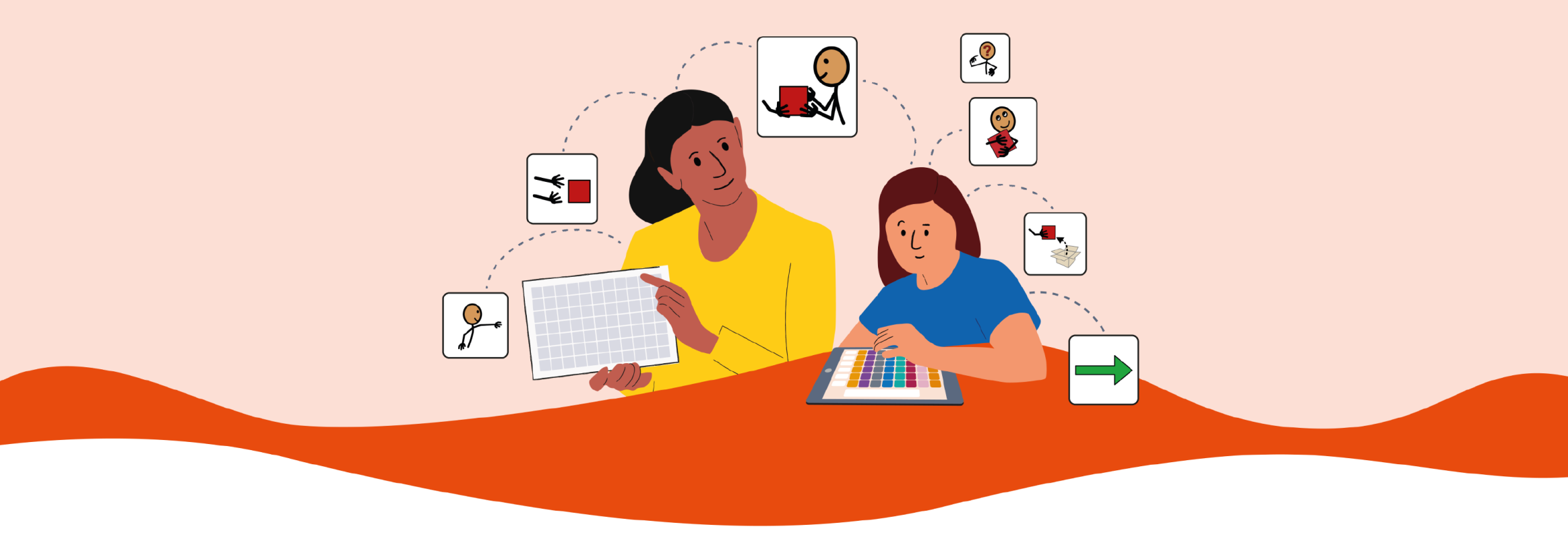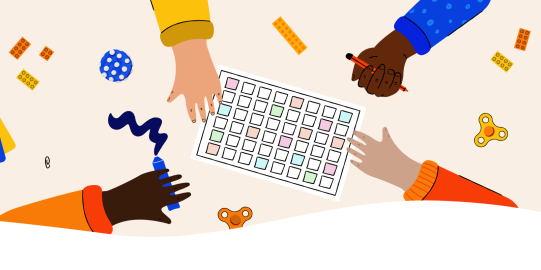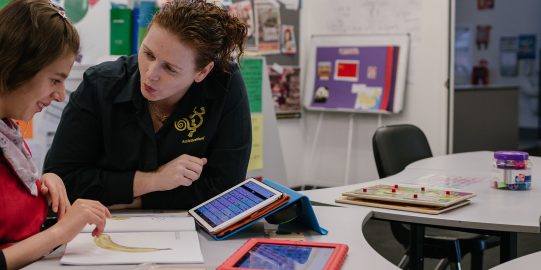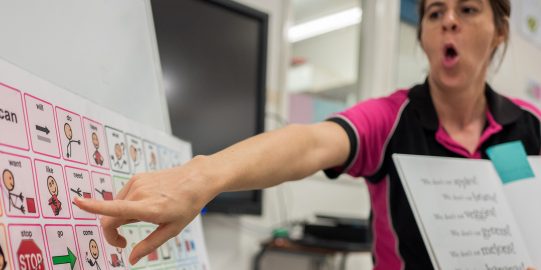Why focus on core words?
Studies across different languages and age groups have found that around 50 words account for 40-50% of our daily communication. 100 words account for 60%, and 200-400 words make up 80% of the words we use every day. Core words are usually verbs, adjectives, and pronouns, and less likely to be nouns.
By giving AAC users quick access to these core words, we’re providing them with a powerful tool to communicate whatever they want to say. Rather than relying on preprogrammed sentences or phrases such as “I want” and “I see”, they can choose from a relatively small set of words to create their own sentences. They can express a wider variety of ideas.
Core word vocabularies
There are several core-word based vocabularies available in apps (such as Proloquo and Proloquo2Go) or communication devices. In theory, these vocabularies give an AAC user 80% of the words they need to communicate. AAC users benefit from learning how to find and combine core words to express personal thoughts and preferences.
Balanced vocabulary
Core words are just one important part of a communication system. All communication tools should be balanced with also quick access to fringe vocabulary and the alphabet. Access to all these words and letters lets AAC users learn to communicate for a wide variety of reasons.
Barriers to teaching core words
Why are core words often not provided or taught to AAC users? One of the major barriers to using core words is that they can be hard to teach. Unlike nouns, most core words are not “picturable”. We can use symbols or photos of most nouns to teach the meaning of the words and represent that meaning on an AAC system. But how do we teach and represent “is”, one of the most frequently used words in English?
Model core words
Typically developing children learn language by hearing it spoken around them all day. They hear this in real-life conversations for years before they develop the ability to put together sentences. But often we hand a non-speaking child a communication device and expect him to use it after a short demonstration.
All AAC users need to see what it looks like to communicate using their AAC in real conversations. This is called Modeling, or Aided Language Stimulation. The idea is to use AAC when you talk with the AAC user.
You don’t need to model every single word you say, especially at the beginning. This would be overwhelming for everyone. Start simply and build it up.
For example, if you’re leaving the classroom to go to the cafeteria, you can verbally say “It’s time to go to the cafeteria” and press the “go” button on the AAC system when you say the word “go”.
Next, you can add more words when you model. So if you’re leaving the house to go to see grandmother, you can verbally say “Let’s go see Granny” and press “go” and “Granny” while you’re speaking these words.




